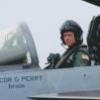Grumman Mallard accelerated stall
-
Members Online
- Medflyer
- EricJ
- acekng1
- jrwilson
- Ragsf15e
- TerminalSpeed
- ta2too
- SKI
- Old Pilot
- Fix
- Flyler
- haymak3r
- takair
- JoeM
- NickG
- katzhome
- RescueMunchkin
- Jim F
- aviatoreb
- Mufflerbearing
- dzeleski
- Aviationist
- Sailorsmuse1
- MikeOH
- Evelyn Craik
- BravoWhiskey
- charlesual
- Hank
- Tmooney
- Em1
- BrentS
- PT20J
- jgarrison
- richardbrochu27
- Matt_AZ
- FlyingDude
- toto
- Shadrach
- Joe Linnebur
- William Munney
- Rmnpilot
- kortopates
- Sheriff23
- georgewdean1020
- Schllc
- CCowboy
- Jaystew324
- Rusty Pilot
- Yooper Rocketman
- RightrudderM20E
- EKoS
- Zippy_Bird


Recommended Posts
Join the conversation
You can post now and register later. If you have an account, sign in now to post with your account.